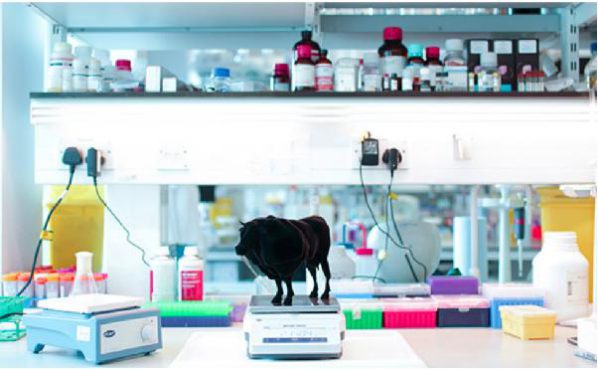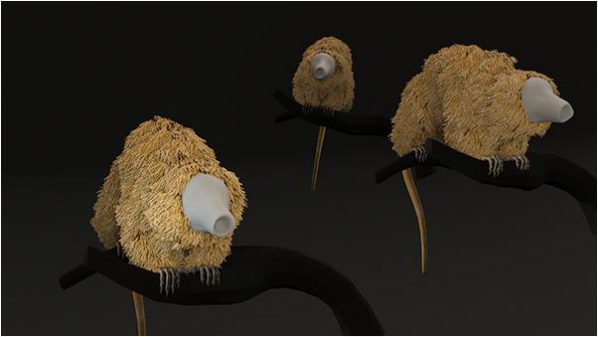
Paul Gong, “The Cow of Tomorrow”, 2015

Paul Gong, “Human Hyena”, 2014

Paul Gong, “The unnatural nature”, 2014
Speakers: Paul Gong and Shi Donglui, moderated by Rebecca Catching
Date: Saturday, April 29, 2017, 2-3:30
Venue: OCAT Shanghai
Address: 30 Wen’an Lu, Jing'an District, Shanghai
Paul Gong
Designer/Researcher/Artist/Lecturer Ouroboros: Organic Organism of O (Artist Collective), part-time tutor of the Department of Industrial Design, Media and Visual Communication Design at Chang Gung University. Born 1988, Nebraska, USA, Paul Gong holds a BA in Industrial Design from the Chang Gung University in Taipei, Taiwan, and an MA in Design Interactions from the Royal College of Art in London, United Kingdom. He sees design is a research method and thinking tool to explore different possibilities, to criticise the past and the present, and to speculate the future. Design should stimulate debate, imagination, and explore the aesthetics of the representation for possible futures. His work attempts to evoke new discussion of the relationships between human, animal, nature, and emerging technologies. He imagines the possibilities of unknown future by combine existing and emerging technologies and biotechnologies, with organisms that evolved or are designed to fulfil human desires and needs, potentially with not only positive but also negative implications. His work has been exhibited at MAS, Museum aan de Stroom, Antwerp, Taiwan Design Museum, Taipei, USC 5D Institute in Los Angeles, Future Gallery in Palo Alto, London, and Guangzhou. Dr. Donglu Shi http://homepages.uc.edu/~shid/ Professor of the Materials Science and Engineering at University of Cincinnati. Donglu Shi received his M. S. (in Physics) in 1983 and Ph. D. (in Engineering) in 1986 from the University of Massachusetts at Amherst. Between 1987 and 1995, he was a staff scientist and principal investigator at the Materials Science Division of Argonne National Laboratory. In 1995, Donglu Shi joined the faculty in the Department of Materials Science and Engineering at University of Cincinnati. He is currently the program chair of the Materials Science and Engineering at University of Cincinnati. Donglu Shi’s main interests include nanostructure design, nano biomedicine, nanophotonics, and magnetism. His most recent works pioneer several novel approaches in developing multifunctional nano carrier systems for early cancer diagnosis and therapy. Based on the new designs of nanostructures, these methods have enabled successful cell targeting for tumor diagnosis and treatment, multimodal optical imaging using quantum dots, photothermal and magnetic hyperthermia therapies of cancer, and drug/gene delivery by intelligent triggering mechanisms. Donglu Shi has also been interested in nanoart by developing artistic images of nanomaterials in collaboration with visual artists.



























